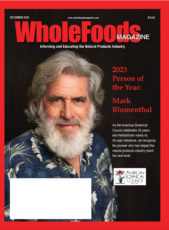At the Council for Responsible Nutrition (CRN) May 5th Regulatory Summit, Akshay Kapoor, MSPH, a former Senior Health Policy Advisor to Rep. Michelle Lujan Grisham (D-NM), shared “Breaking the Gridlock: Regulation of Dietary Supplements in the United States," which proposes a comprehensive pathway for reforming the dietary supplement market.
Kapoor statesBreaking the Gridlock, which was co-authored with Joshua M. Sharfstein, M.D., and published inDrug Testing and Analysis, was formed out of parties' inability to come to an agreement on a path forward to rid the market of tainted and dangerous products. Its purpose is to create “a new framework for regulation in which consumers, industry and regulators can all find common ground.”
Although The Dietary Supplement Health and Education Act (DSHEA) was passed into law as a “framework for supplements and to ensure continued access to safe products, made to quality standards,” additions to the framework such as the Dietary Supplement and Nonprescription Drug Consumer Protections Act, Good Manufacturing Practices (GMPs), and draft guidance were established and passed to help improve oversight of dietary supplements. With hundreds of recalls and outbreaks,Breaking the Gridlock addresses our regulatory framework for dietary supplements can be improved.
According to Kapoor, three gaps causing problems with regulating dietary supplements are:
- No required registration of products, either before or after marketing. As a result, FDA does not know what is in the market at any point in time, and manufacturers can reformulate products under existing brand names.
- DSHEA creates a high bar for the FDA to demonstrate a safety problem prior to regulatory action.
- DSHEA does not require a premarket review of safety or efficacy, as is required for pharmaceuticals and high risk medical devices.
The new approach would be applied in three phases, with the first including a FDA registration, or Quick Response (QR) Code, of all dietary supplements to permit easier enforcement against rogue products and a stronger disclaimer explaining the limited role of FDA in evaluating structure/function product claims.
The second phase would establish a standard manufacturing procedure for botanicals coupled with a standard laboratory identification to characterize each product. By implementing a laboratory method that characterizes a supplement, the understanding is that it would make “manipulating and adulteration far more difficult.” In addition to setting up a standard procedure and identification, the second phase would include increased surveillance of potential adverse effects, with “authority to suspend sales during an agency review in a setting of sufficient concern and remove ingredients from the market based on the standard recommendation by the Institute of Medicine.”
The final phase, which would also be applied in two steps, would address issues related to class and inspections. The first part of the third phase would give FDA special authority to impose restrictions on the use of claims against a product marketed with specific claims likely to pose a risk to the public. In the case of inspections, a user fee arrangement would be placed, similar to what exist for drugs and devices for more inspections.
Why would this work? Kapoor states inBreaking the Gridlock,that healthcare professionals will accept an approach that provides greater assurance for patients and with small manufacturers tarnishing the image and reputation of the entire market, leaders of the industry will recognize that a “serious crisis can cause significant harm to consumers which could lead to a harsh political climate.”
Posted on WholeFoods Magazine Online 5/18/2016










